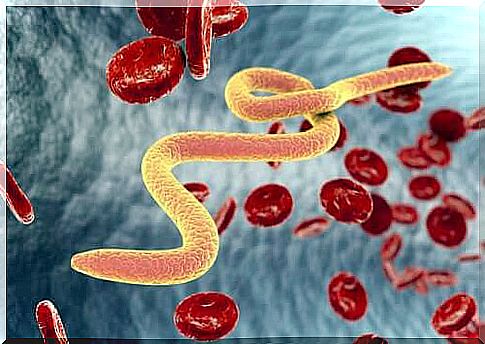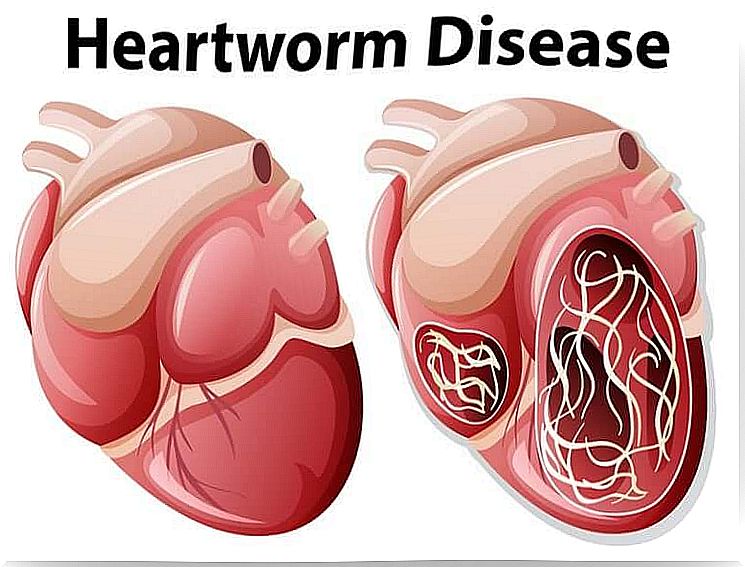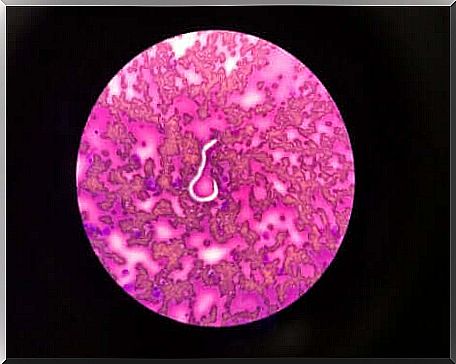Filariasis In Cats: What To Do?

Filariasis in cats is not as common, nor has it been as thoroughly studied, as filariasis in dogs.
The reason for this situation may be due to the fact that, firstly, cats are not the main host of the parasite and, secondly, these animals usually do not show symptoms of the infection or these symptoms are confused with other respiratory problems.
If you suspect that your cat has filariasis, you should see your veterinarian as a matter of urgency. This infection is a zoonosis, that is, it can be transmitted to humans and other animals, such as dogs.
Types of Filariasis
Filariasis refers to a group of diseases, mainly tropical, caused by nematodes – round worms – of the Filaroidea family . They are transmitted by mosquitoes.
In countries where these infections are endemic, the disease can become chronic, which results in an impoverishment of the population, considering that there are about 40 million human beings with some type of chronic filariasis.
These parasites, when adults, measure between 17 and 100 millimeters. In their larval stages, they are known as microfilariae and do not exceed 340 micrometers, that is, 0.34 millimeters.
Filariasis is classified into different species according to their morphology and the type of infected tissue. Thus, it is possible to find:
- Lymphatic filariasis, which affects lymph nodes. It is caused by the species Wuchereria bancrofti, Brugia malayi and Brugia timori.
- Filariasis of the serous cavity – membrane that covers the organs – caused by the Mansonella pertans and Mansonella ozzardi filariae .
- Cutaneous tissue filariasis, caused by Mansonella streptocerca and Dracunculus medinensis.
- Loa loa and Onchocerca volvulus are parasites that infect the subcutaneous tissue and the conjunctiva. The Loa loa species is also known as the eyeworm.
- Finally, filariasis in cats, canine filariasis or heartworm is caused by the worm Dirofilaria immitis and infects the pulmonary arteries and the heart. Unlike other types of filariae, heartworms can live in temperate zones.

Dirofilaria and the cat as host
Filariasis in cats is not as common as in dogs. The prevalence of infection in felines is around 5 to 20% compared to dogs from the same region. In fact, in places where the disease is endemic, usually no more than 10% of animals are affected.
As in dogs, heartworm disease presents in the form of worms in the pulmonary artery and right ventricle of the heart. One of the differences we found between filariasis in felines and canines is that cats have few worms, between one and two (exceptional, up to 19 worms were found).
Furthermore, the parasites mature more slowly than in dogs and only live for two years inside the feline body. This contrasts with the life expectancy – five or six years – of the parasite that infects dogs.
On the other hand, cats do not have microfilariae – the larval form of the filaria – because their immune system is very effective against these organisms. It is known that 80% of cats suffering from heartworm disease do not have microfilariae.

Filariasis symptoms in cats
Most cases of heartworm disease in cats are asymptomatic. The symptomatology or clinical picture, when presented, is very similar to that of dogs:
- Ascites or fluid in the abdomen
- vascular edema
- Lack of appetite
- Apathy
- Dehydration
- Arrhythmias
- Cardiac insufficiency
- Syncope
- Respiratory failure or dyspnea
- Hemoglobinuria (dark urine)
The animal’s death is usually sudden and usually occurs due to cardiorespiratory arrest.
This can occur for a variety of reasons, such as thrombi caused by the accumulation of dead worms in the arteries. Lesions that appear in the lungs or heart can also lead to the end of the animal’s life.
Treatment of filariasis in cats
First, we must not administer any medication to an animal without the prior prescription of a veterinarian, under any circumstances.
Filariasis in cats cannot be treated the same way as in dogs. The drugs used in canine heartworm disease can cause feline death, as they are very hepatic and nephrotoxic.
It is generally recommended that symptomatic cats rest, along with the use of corticosteroids to relieve symptoms. In addition, other medications can also be used if the cat has heart failure.









